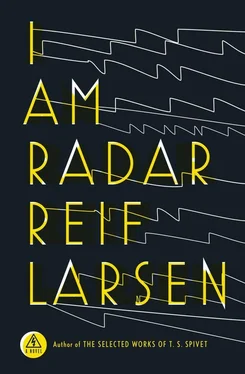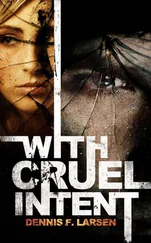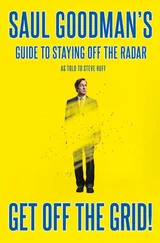But plans to rehearse quickly receded as technical problems arose when the vircator was installed inside the wagon. Something was wrong. The chips would no longer entangle. Unlike the pair last night, the birds refused to fly. They lay motionless on the deck, appearing as if they had all fallen out of the sky at once. Even Horeb’s beating of the drum would not coax them out of their stillness.
Otik — sweating profusely and cursing a beautiful blue streak ( “Jebeni kuchkin sin! Serem ti se u carapu!” ) — retreated back into Moby-Dikt and began to furiously tinker away. Any offers to help were venomously rejected.
“Let him be,” said Lars.
“He doesn’t like me,” said Horeb, staring after Otik. “What did I do?”
“It takes a while,” said Radar. “Believe me. It’s nothing personal.”
“He’ll come around,” said Lars. He handed Radar a straw cowboy hat. “For the sun. It can be bad. You’ve got to protect yourself.”
Radar took the hat and sheepishly put it on.
“Thanks,” he said, aware of himself and all that he was not.
“Nice,” said Horeb. “Like John Wayne.”
“You know Morse code, correct?” Lars said to Radar.
“I found Xanadu, didn’t I?”
“I didn’t want to assume. It is a dying language.”
“You think I could grow up in Kermin’s house and not learn CK?”
“It would be unlikely,” Lars admitted. He handed Radar a Morse key. “We’ll set up a station for you, stage left. You’ll be the one who sends out the opening sequence. We begin every performance with that line from Numbers — you know, ‘What hath God wrought?’”
“Baltimore, 1844,” said Radar. He plugged the Morse key into the radio and then clicked out the message: — •••• •— •••• •— •••• —• •• —•• •— ••• •• ••——• •••• —The rhythm of dits and dashes flashed out across the water and over the green islands of floating hyacinth.
Horeb, who was sitting nearby, hit the drums in precisely the same rhythm, alternating the high and low drum for each dit and dash: 

“What language is that?” he asked Radar.
“It’s Morse code. Each letter has a different coded sequence,” said Radar. “ W is di-da-da . Short then long long.” He demonstrated: —
“Ah, in drumming it is different. It is not letter by letter. The drum is speaking the same words you speak with your voice.”
“Wait,” said Radar, turning to him. “You’re actually speaking with the drum? I thought you were just drumming.”
“Of course I was speaking,” said Horeb. “Did you not hear it? Why do you think they were answering me last night? I wasn’t sure if they would understand, because I was drumming in Kele, which is an upriver language, but they heard me and answered. They were drumming back in their local language — I think some form of Teke or Lingala, but I could still understand what they were drumming.” He demonstrated. “‘He is coming, he is coming.’”
“But how did you learn how to speak on the drum? I thought you said you’d never been up the river before?”
“I haven’t. I learned to drum-speak while I was at university in Kinshasa. I was studying linguistics, you see, and there was a drumming club. We met in the cafeteria in the evenings. I think it was formed to preserve and study the drum language of the river tribes. You know, most of these boys are not learning the drums anymore. They have mobile phones, they want to get to the city, they don’t care about the old ways,” he said. “But I’ve always liked languages. I’m good at them. I can imitate almost anything I hear. My aunt and uncle used to call me le perroquet when I was little. One of the students in the club, Boyele, he was from the Lokele tribe, near Kisangani, and he knew how to talk with drums. He is the one who taught us. He is an amazing man — I think he is the first person from his village to go to university. He always said he was going to go back and build a hospital there. . I don’t know what became of him.”
“This is where we’re headed,” said Lars. “Maybe we’ll see his hospital.”
“This area is very famous for its talking drums. But the Lokele don’t use skin drums like these. That’s why I was wondering if it would work. I learned on a drum made from a log with a long hole cut out of it. They call it a bongungu .”
“But how do they talk with it?” asked Radar.
“The drumming language is like speaking words. When you play, you sound out a word. Like lisaka .”
He played:  Two taps on the low drum, and then one on the high drum.
Two taps on the low drum, and then one on the high drum.
“But Kele is a tonal language. A lot of African languages are. Depending on how you say lisaka, it can mean different things.
Every syllable can be soft or hard, and this changes the meaning.  each syllable said soft, means a puddle, or like a wet piece of land.
each syllable said soft, means a puddle, or like a wet piece of land.  with the last syllable hard, means a promise that you make to someone. And
with the last syllable hard, means a promise that you make to someone. And  with two syllables hard, means poison.”
with two syllables hard, means poison.”
“Seems pretty easy to screw up.”
“For people not used to tones, yes. When you drum, all you can drum is the soft and the hard, not the actual syllable. The drum has a soft tone”—he played the low drum—“and the hard tone”—he played the high drum.
“Like the dot and the dash.”
“The Lokele call it the male and the female. . But because you cannot say the word, only the tones, when you drum this”—he hit soft soft hard  —“it could be ‘li-sa- ka, ’ as in puddle, but it could also be ‘bo-son- go, ’ the river current. So you must say more than just the word. You must talk around the word to let the others know what you mean. So ‘moon,’ which is normally koko, becomes
—“it could be ‘li-sa- ka, ’ as in puddle, but it could also be ‘bo-son- go, ’ the river current. So you must say more than just the word. You must talk around the word to let the others know what you mean. So ‘moon,’ which is normally koko, becomes  he drummed this out, “which means ‘the moon looks down at the earth.’ Or if you want to drum ‘don’t worry’ which is owangeke , you must actually drum
he drummed this out, “which means ‘the moon looks down at the earth.’ Or if you want to drum ‘don’t worry’ which is owangeke , you must actually drum  which means ‘take away the knot of the heart and throw it up into the air.’”
which means ‘take away the knot of the heart and throw it up into the air.’”
“Don’t worry,” Radar said, and tapped out the Morse code:  beat out Horeb.
beat out Horeb.
Lars, who had been watching them, jumped to his feet.
“This changes everything,” he said. “Horeb, you’ll be our chorus. You’ll narrate the story with the drum. Do you think you can do that?”
Читать дальше



 Two taps on the low drum, and then one on the high drum.
Two taps on the low drum, and then one on the high drum. each syllable said soft, means a puddle, or like a wet piece of land.
each syllable said soft, means a puddle, or like a wet piece of land.  with two syllables hard, means poison.”
with two syllables hard, means poison.” —“it could be ‘li-sa- ka, ’ as in puddle, but it could also be ‘bo-son- go, ’ the river current. So you must say more than just the word. You must talk around the word to let the others know what you mean. So ‘moon,’ which is normally koko, becomes
—“it could be ‘li-sa- ka, ’ as in puddle, but it could also be ‘bo-son- go, ’ the river current. So you must say more than just the word. You must talk around the word to let the others know what you mean. So ‘moon,’ which is normally koko, becomes  he drummed this out, “which means ‘the moon looks down at the earth.’ Or if you want to drum ‘don’t worry’ which is owangeke , you must actually drum
he drummed this out, “which means ‘the moon looks down at the earth.’ Or if you want to drum ‘don’t worry’ which is owangeke , you must actually drum  which means ‘take away the knot of the heart and throw it up into the air.’”
which means ‘take away the knot of the heart and throw it up into the air.’” beat out Horeb.
beat out Horeb.










